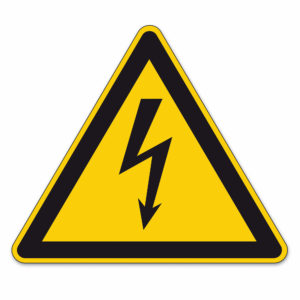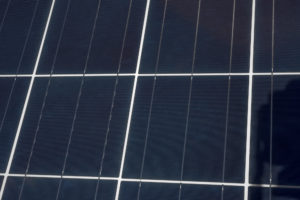You have probably seen a typical solar panel and wondered about the mysteries it holds. The need for conventional power systems is growing, and America is at the forefront.
Indeed, the country has successfully introduced solar energy and produced 3% of its electricity. Now is the time for you to move from conventional sources to a more economical and greener energy source.
Most solar panels look the same and have solar cells that make them functional. You might not know about solar PV panel output voltage if you are new to the solar system.
Can a solar panel produce the optimal amount of energy to power your house?
The maximum open-circuit voltage output from a single solar cell is 0.5V to 0.6V. It means that a 32 cell solar panel produces a total voltage of 14.72V. Hence, you might need a complete solar PV system to keep all your appliances functional.
The panel voltage varies on various solar modules that affect the solar power output.
Here’s everything you need to know!
Contents
- 1 Key Takeaways
- 2 What is Photovoltaic Effect?
- 3 Does Weather Effect Voltage Drop?
- 4 The Inter-Relationship Between Voltage and Solar Cells
- 5 Solar System Voltage Breakdown
- 6 Factors that Influence Voltage
- 7 Various Voltage Figures for PV Modules
- 8 Case Study: Optimizing Solar Panel Voltages for Residential Use
- 9 Expert Insights From Our Solar Panel Installers About Solar Panel Voltages
- 10 Experience Solar Excellence with Us!
- 11 The Bottom Line
Key Takeaways
- America has successfully introduced solar energy, producing 3% of its electricity, making it an economical and greener energy source.
- Solar panel voltage varies based on factors like the number of cells, weather conditions, and shading, affecting power output.
- Understanding open-circuit voltage (VOC), maximum power point voltage (VMP), and nominal voltage (NV) is crucial when choosing solar panels for your home.
What is Photovoltaic Effect?
The photovoltaic effect is the backbone of solar PV modules. Not only does it keep the solar systems functional, but it also affects the power output.
According to NASA, the PV modules allow the conversion of light energy to electricity but at an atomic level.
In a solar module, a solar cell’s ability to emit electrons when exposed to the sun or any light source perfectly represents this effect.
The silicon in PV cells is an excellent semiconductor that carries the electrical current to the solar battery. It helps the cells produce electricity in the optimal charging voltage to keep all the panels effective.
Note: Get your house 72 segment solar panels as they will produce a maximum power of 36V. Ensure that it gets connected like panels in series to a charge controller with 288 load volts.
Does Weather Effect Voltage Drop?
If it remains away from the shade, your panel voltage will offer you enough consistent power. The photovoltaic cells will have enough voltage output when the sun intensifies.
Ideally, the current output becomes predominant when the weather condition is excellent, but the voltage drops during light intensity.
Panel temperature will influence the output, irrespective of how many cells the photovoltaic panels have. The maximum voltage will vary depending on the weather and affect the entire system.
Even then, you need to ensure that your solar array has no less than a 3% voltage drop from the operating voltage. You can prevent this drop by keeping the wires thicker, minimizing their length, and strategizing the inverter placement.
Note: According to the National Electrical Code, all terminals that carry 50 Volts of DC power need to be covered and protected from accidents. Indeed, solar panels can generate a high voltage that can become fatal for the bare hand. So, make sure to follow the National Electrical Code and do the needful.

The Inter-Relationship Between Voltage and Solar Cells
As mentioned earlier, the solar cells are the silicon elements acting as semiconductors found in the panels. They are wired together and fit in series for optimal functionality.
Each solar cell will help raise the ultimate voltage output from the panel.
Multiple cells will work together to offer you a high voltage in your home. Usually, a typical solar cell will produce 0.46V. However, the American market has various solar cell types; hence the accurate power output will differ.
It depends on the solar cells, so yes, the voltage produced gets affected by the solar cells in the solar panels.
Fun Fact about bypass diode: If you use a bypass diode, you can allow the overall power output from normal solar cells to bypass the shaded cells. With the help of bypass diodes, you can mitigate the output loss formed by shaded cells.
Solar System Voltage Breakdown
The power output influences solar cells, the weather, and most importantly, the number of panels used. Here is a list of different solar panels with varied solar cell anatomy and their voltages:
- 31 cells = 14.72V
- 36 cells = 16.56V
- 60 cells = 27.60V
- 72 cells = 33.12V
- 96 cells = 44.16V
You could also use the equation to determine the solar panel’s power from the current and voltage. P = V x I (Power = Voltage x Current).
For example, if your solar panel has a voltage of 32.78, you can get the power using the current information. Let’s say that the current is 9.31 Amps. Therefore, the power will be 305 Watts. 32.78V x 9.31 Amps = 305.1818 Watts.
Factors that Influence Voltage
A solar panel has many intricacies you need to adhere to if you want optimal functionality. The factors that influence the overall current are:
- The temperature of the panel
- The energy conversion rate
- The bad climate conditions
- The presence of solar shadings
- The orientation, angle, etc.
To keep your system functioning correctly for years, you need to maintain it and use it every day. Ensure to install an excellent solar battery to store all the extra energy produced but not used up.

Various Voltage Figures for PV Modules
If you have one panel with 31 cells, your voltage will be much lesser than other panels with 96 cells. If your panels are heavily shaded or have any influence from different materials, the energy output will be meager.
Besides, various factors influence the overall output current figures.
The Voltage at Open Circuit (VOC)
It is the voltage that you can read using a multimeter or voltmeter. But, you can only read it when the PV module does not connect to the load.
You will find this number given on the specifications of the module. VOC is used to test new modules.
The Voltage at Maximum Power Point (VMP)
The maximum power point voltage occurs when the PV module is connected to any load. You can read it when the cells are operating at their peak performance.
You might find the VMP at an I-V curve bend near the most significant power output.
Nominal Voltage (NV)
You can use nominal voltage as a classification method from the era of battery systems. Hence, you cannot find the nominal voltage in any PV module’s sheet.
Example: In a 30W solar panel, if the solar radiation decreases from 1000W/m2 to a meager 200W/m2, the power will also drop from 300W to 60W. Yet, the range remains somewhat similar at its MPP of 33V, only the open-circuit voltage drops from 43V to 38V.
How Are They Different?
In a 36 cell panel, the NV is 12V, VOC is 21V, and VMP is 17. On the contrary, for a 72 cell panel, the VOC is 42V, VMP will be 35V, and NV is 24V. But, for a 54 cell panel, you will find the VOC to be 33V, VMP 26V, and NV of 18V.
At the same time, a 60 cell panel will have NV of 20V, VOC of 36V, and VMP of 29V. And lastly, a 48V has a VMP of 17V, VOC of 30V, and NV of 18V.
Case Study: Optimizing Solar Panel Voltages for Residential Use
Background
At Solar Panels Network USA, we were approached by a homeowner facing issues with their existing solar power system. The primary concern was inconsistent power output, which was affecting the overall efficiency and reliability of their home energy supply.
Project Overview
The objective was to diagnose and optimize the solar panel voltages to ensure a stable and efficient power output. The homeowner’s system included several panels of varying ages and conditions, leading to an uneven voltage output and reduced overall efficiency.
Implementation
Initial Assessment:
Our team conducted a thorough assessment of the existing solar panel system. We measured the open-circuit voltage (VOC), maximum power point voltage (VMP), and nominal voltage (NV) of each panel to identify inconsistencies and potential issues.
Panel Reconfiguration:
We reconfigured the solar panels to ensure optimal series and parallel connections, maximizing the overall voltage output. This involved adjusting the placement and wiring of the panels to reduce shading and improve exposure to sunlight.
Upgrading Components:
To address the issue of voltage drops due to shading and weather conditions, we installed bypass diodes and DC optimizers. These components help maintain a consistent voltage output by allowing current to bypass shaded or underperforming panels.
System Monitoring:
We implemented a monitoring system to continuously track the performance of the solar panels. This allowed us to quickly identify and address any issues that could affect voltage output, ensuring long-term stability and efficiency.
Results
Improved Voltage Stability:
The reconfiguration and component upgrades significantly improved the stability of the solar panel voltages. The homeowner reported a consistent and reliable power output, even during cloudy days or partial shading conditions.
Enhanced Efficiency:
The optimized system showed a marked increase in overall efficiency. By maintaining proper voltage levels, the panels could produce more energy, reducing the homeowner’s reliance on grid power and lowering their energy bills.
Long-Term Reliability:
With the monitoring system in place, any potential issues could be detected early and addressed promptly. This proactive approach ensured the long-term reliability and performance of the solar energy system.
Summary
This case study highlights the importance of understanding and optimizing solar panel voltages for residential use. By addressing issues related to panel configuration, shading, and component quality, Solar Panels Network USA was able to enhance the efficiency and reliability of the homeowner’s solar power system. Proper voltage management is crucial for maximizing the benefits of solar energy, ensuring a stable and sustainable energy supply for years to come.
Expert Insights From Our Solar Panel Installers About Solar Panel Voltages
Understanding solar panel voltages is crucial for optimizing your solar energy system. Each solar cell contributes to the overall voltage, and knowing how to configure them effectively can make a significant difference in energy output.
Senior Solar Technician
Weather conditions play a major role in solar panel performance. Ensuring your panels are free from shade and properly maintained can minimize voltage drops and enhance efficiency, even in less-than-ideal weather.
Lead Solar Engineer
The inter-relationship between voltage and solar cells is fundamental to solar energy systems. Properly configured panels with high-quality cells can consistently produce the necessary voltage to power your home efficiently.
Solar Installation Specialist
Experience Solar Excellence with Us!
Trust in Solar Panels Network USA, where our seasoned experts deliver top-quality solar solutions for homes and businesses nationwide. With a legacy of countless successful installations and a commitment to sustainable energy, we’re your reliable partner in the solar journey. Ready for a brighter, eco-friendly future? Call us now at (855) 427-0058 and harness the power of the sun!
The Bottom Line
You can have an electrically connected solar panel, but you need to refrain from using a shaded cell and place it somewhere the light hits. Only then can your solar panel offer the optimal voltage, power, and current output for your home.
You can use module-level electronics like DC optimizers, string inverters, or AC power converters to optimize efficiency.
Usually, the weather, dust, and other materials affect the voltage drop. Even then, the voltage only drops 3% or less depending on the quality. In America, you will find the best solar panels with 96 cells that produce 44.16V for your home.
The power will differ in the PV systems based on their cells and weather conditions. The temperature the panel produces will also significantly affect the deliverability of the total capacity. When you have decided to buy PV systems for your home, make sure to look at the VOC, VMP, and nominal voltage rating.
Now, you are fully equipped to start your green energy journey.
About the Author
Solar Panels Network USA stands at the forefront of solar energy solutions, driven by a team of seasoned solar engineers and energy consultants. With over decades of experience in delivering high-quality solar installations and maintenance, we are committed to promoting sustainable energy through customer-centric, tailored solutions. Our articles reflect this commitment, crafted collaboratively by experts to provide accurate, up-to-date insights into solar technology, ensuring our readers are well-informed and empowered in their solar energy decisions.

